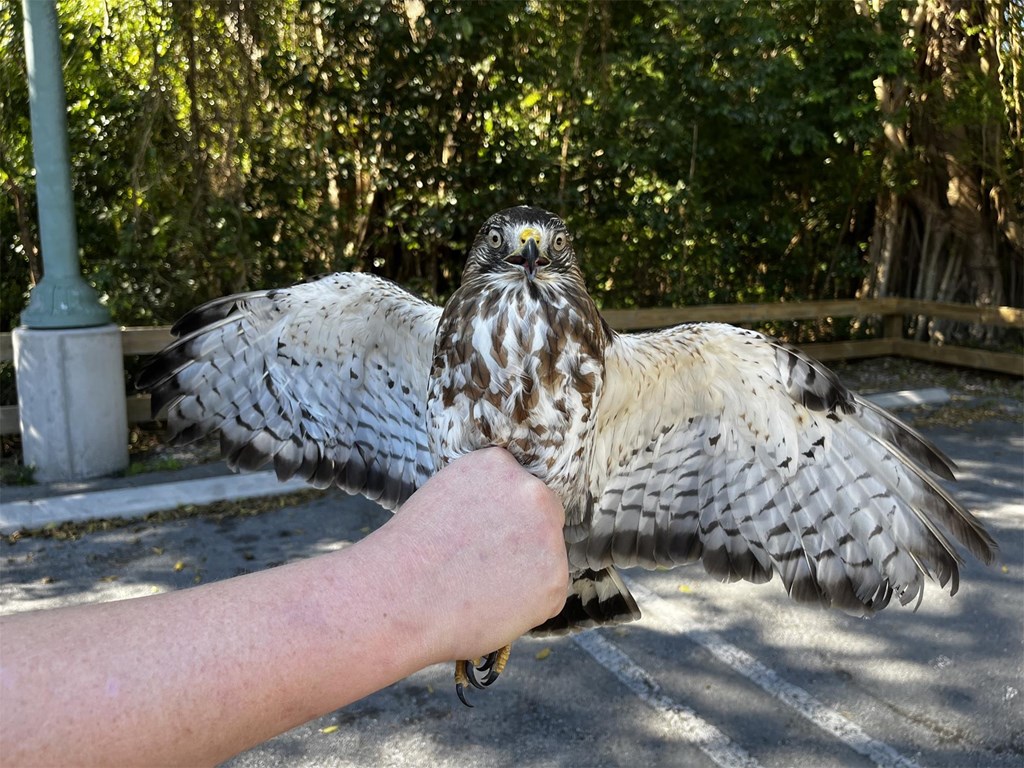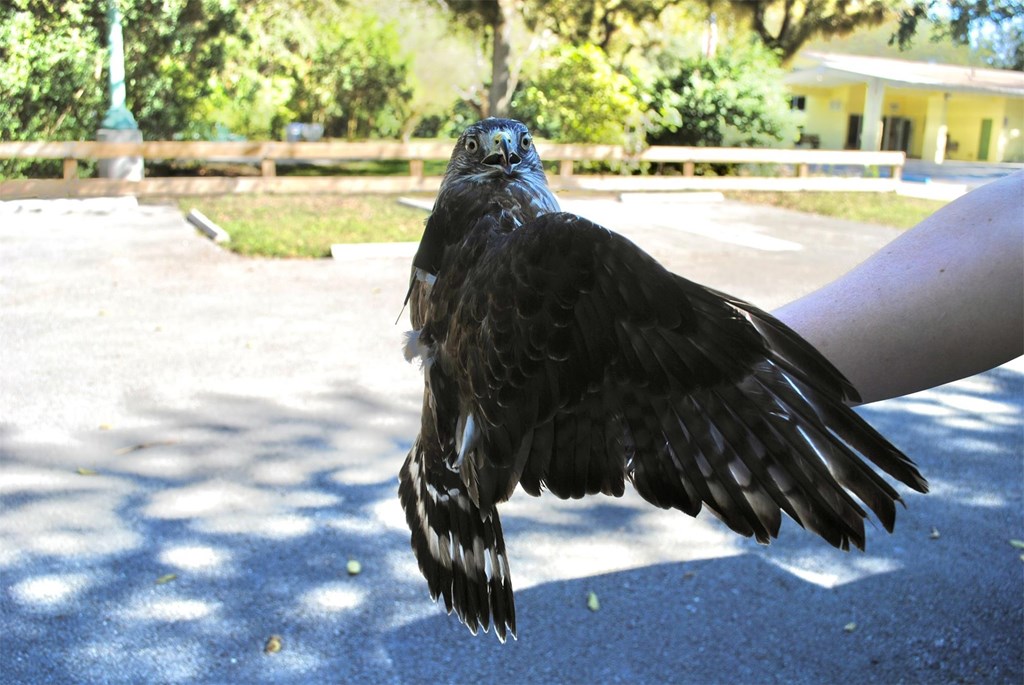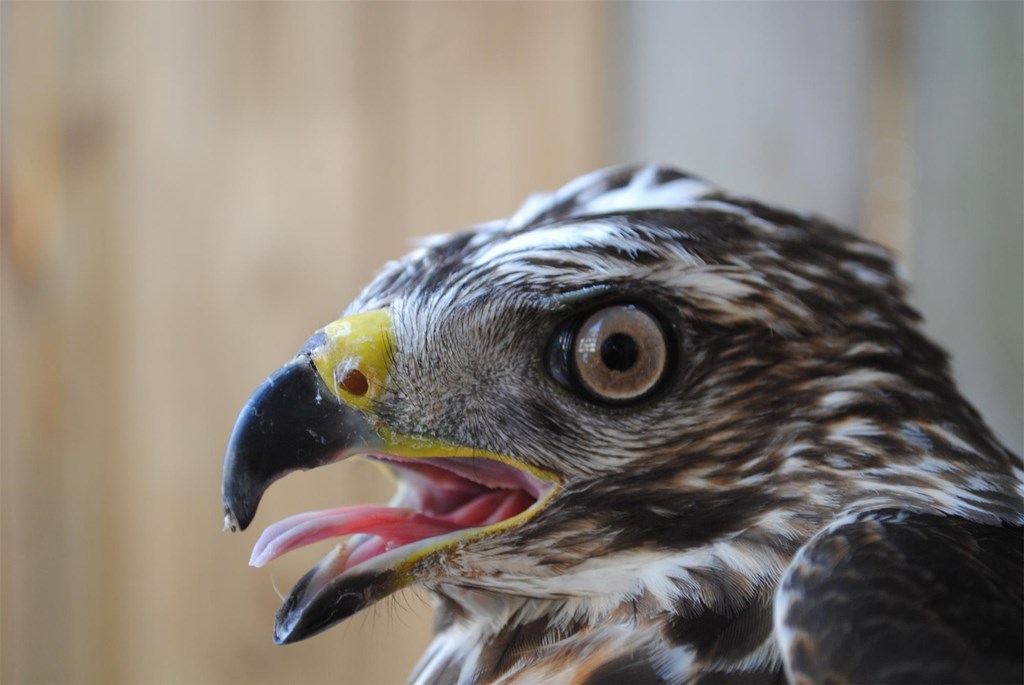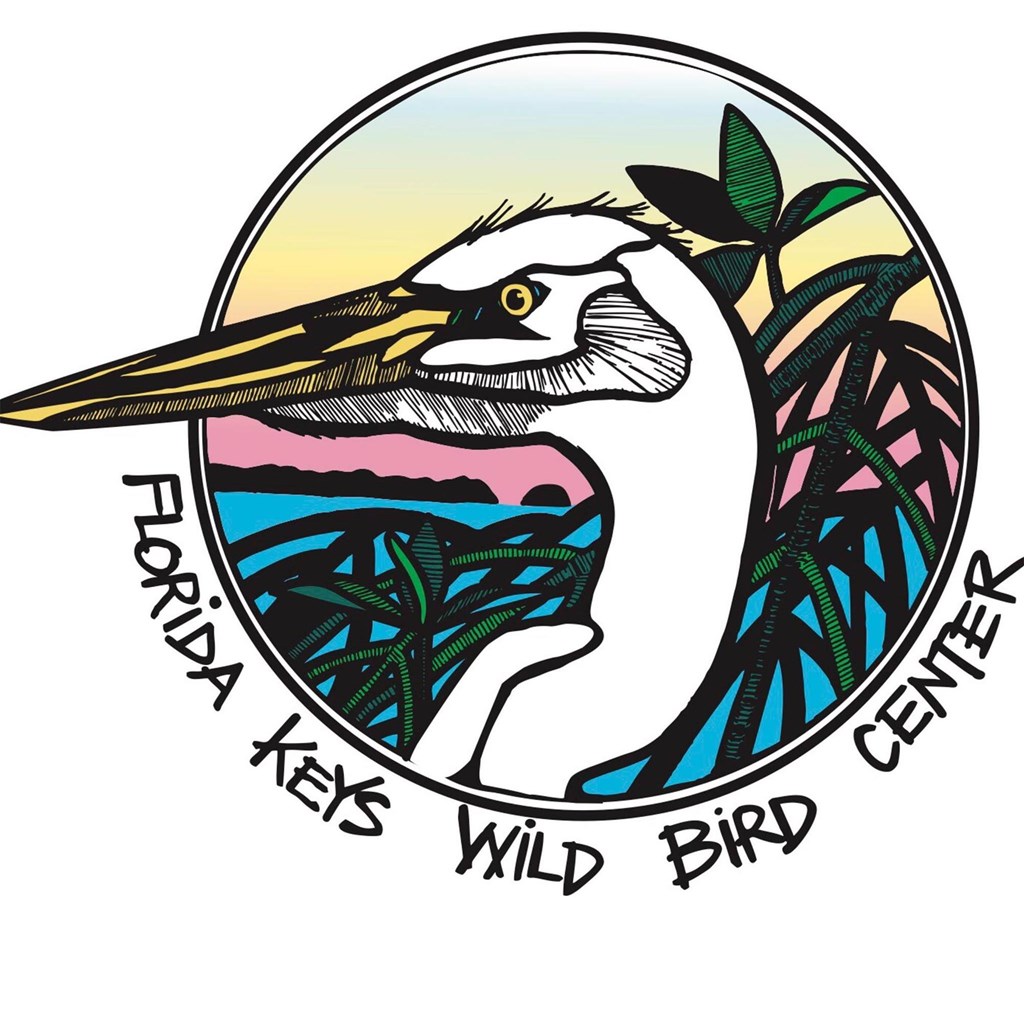Pilot Study in the Sunshine State: Assessing the Survival and Movements of Broad-winged Hawks
Posted on January 30, 2025 in Science

After a few years of background work and unsuccessful attempts at road trapping wintering broad-winged hawks, Hawk Mountain researchers are excited to share a new pilot study assessing the survival and movements of broad-winged hawks from the Sunshine State, Florida.
Although broad-winged hawks primarily winter in Central and South America, a small segment of their eastern population winters in south Florida. Little is known about where they might be nesting and how well they survive in south Florida during winter. To date, only one Florida wintering bird has been tagged, ‘May,’ trapped in Cape May, NJ in fall 2023.
In early January, Hawk Mountain research biologists Becca McCabe and Bracken Brown traveled +1,900 km south to work with two wildlife rehabilitation facilities, Pelican Harbor Seabird Station in Miami and Florida Keys Wild Bird Rehabilitation Center in Tavernier. This is the first time the Broad-winged Hawk Project has worked with rehabilitated birds, of which there were three. After receiving care at these facilities, these broad-winged hawks were released back into the wild with GPS transmitters (transmitters are small enough that they do not interfere with the bird’s behavior and flight capabilities).
Meet Biscayne

The first, named Biscayne, is an adult broad-winged hawk that was found on the ground near Pelican Harbor Seabird Station in downtown Miami. The intake assessment noted this individual was emaciated, as well as suffering from head trauma and eye ulcers. The staff at Pelican Harbor treated and monitored Biscayne’s behavior and health until they were ready for release.
We visited Pelican Harbor to affix a lightweight GPS transmitter backpack to Biscayne and released her away from the hustle and bustle of the coastal metropolis. Biscayne’s tracking data showed her moving around for a few days, eventually returning to the neighborhood where she was originally rescued.
Meet Big Pine

Big Pine, an immature broad-winged hawk, was found on the ground in Key Largo in late December. Rescued and admitted to Florida Keys Wild Bird Rehabilitation Center, rehabbers found signs of head trauma (slow pupillary light response in the left eye and not responsive to stimulus) and noted moderate dehydration. Treated with fluids and vitamins, Big Pine improved quickly, gaining weight and flying well in the flight cage.
With limited suitable habitat in the Keys, we released Big Pine about 55 km north at the Fruit & Spice Park. The staff at the Fruit & Spice Park were happy to offer a haven for this young broad-winged hawk post-rehabilitation.
Meet Largo
Largo, another immature broad-winged hawk, was admitted to Florida Keys Wild Bird Rehabilitation Center in late November. This individual was picked up from the median of the highway near mile marker 95 in Key Largo after being hit by a car. On intake, they found signs of head trauma, no pupillary light response, and the young bird was disoriented, unbalanced and had feather mites. With treatment from the amazing staff at FKWBRC, its health improved quickly, and by the time we arrived in Florida, Largo was ready to be released back into the wild!
Similar to Big Pine, Largo was released at the Fruit & Spice Park in Homestead and is holding down a small winter range in the area.

Now sporting these GPS devices, we will learn more about how the birds move across the Florida landscape in winter, where they migrate to, and if and where they will nest. To protect these three birds as they reorient back into the wild, we are going to keep their tracking data private. Once they initiate spring migration, we will share public maps on our website.
This pilot study will attempt to fill in knowledge gaps in two areas, (1) providing a glimpse of wintering behavior and habitat use of broad-winged hawks in Florida and (2) as there has been very little research focusing on rehabbed raptors, we hope to learn how the birds survive post-release.
Thank you to our amazing collaborators!
A huge thank you to Pelican Harbor Seabird Station and Florida Keys Wild Bird Rehabilitation Center for collaborating with us on this pilot study, as well as all the work they do to protect and care for wild birds!

Pelican Harbor Seabird Station (founded in 1980) is Miami’s premier native wildlife hospital evolving into a world-class wildlife rescue, rehab, release, and education center. They are dedicated to improving the lives of sick, injured, and orphaned native wildlife with the goal of releasing healthy animals back into the ecosystem, thus enabling future generations.
Learn more about them here: https://www.pelicanharbor.org/

The Florida Keys Wild Bird Rehabilitation Center, Inc. is a not-for-profit organization dedicated to the rescue, rehabilitation, and release of native and migratory wild birds that have been harmed or displaced; providing or locating a humane shelter for those birds that cannot be released; and educating the public towards the importance of coexistence with all wild bird species.
Learn more about them here: https://www.keepthemflying.org/